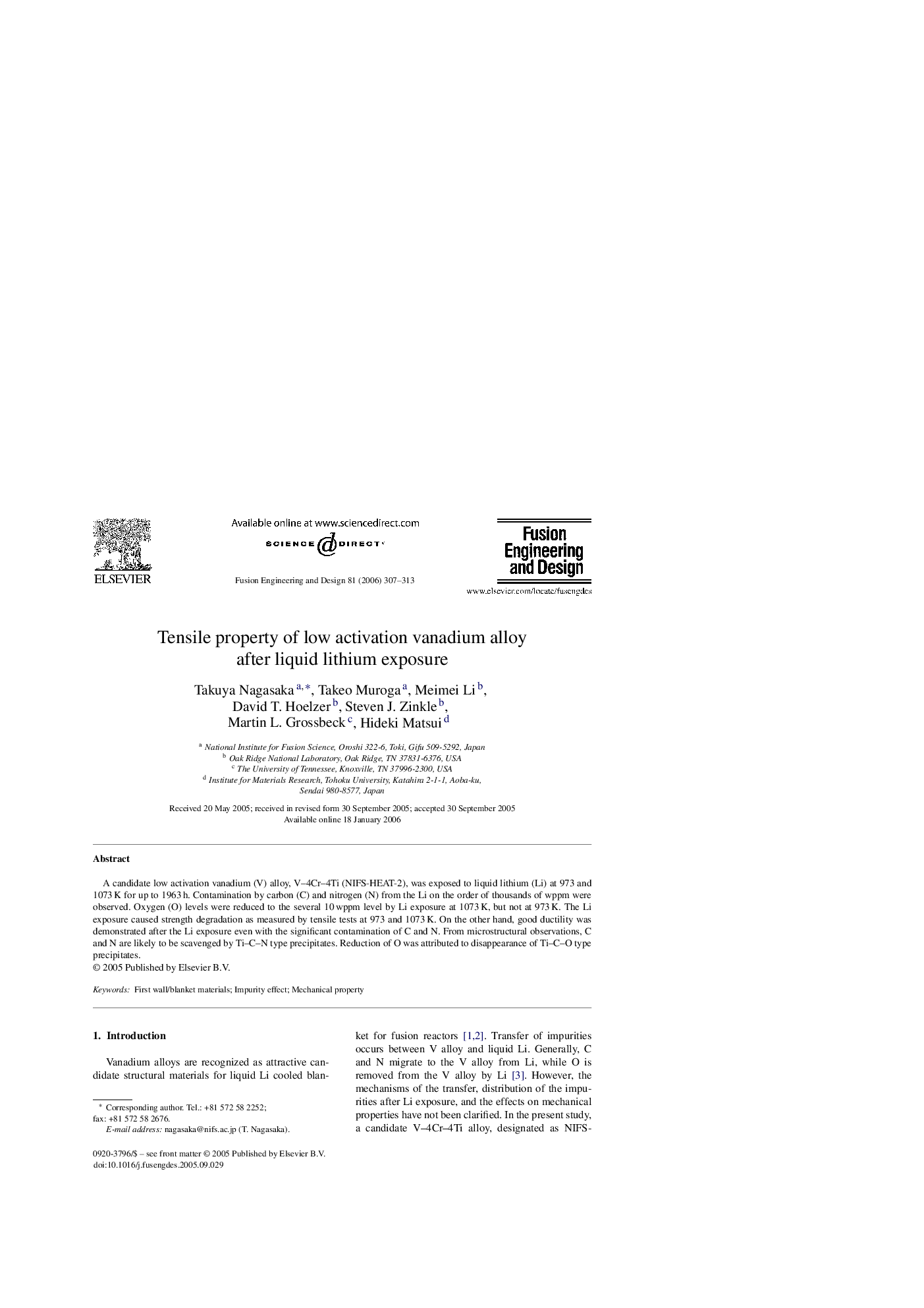| Article ID | Journal | Published Year | Pages | File Type |
|---|---|---|---|---|
| 273465 | Fusion Engineering and Design | 2006 | 7 Pages |
Abstract
A candidate low activation vanadium (V) alloy, V–4Cr–4Ti (NIFS-HEAT-2), was exposed to liquid lithium (Li) at 973 and 1073 K for up to 1963 h. Contamination by carbon (C) and nitrogen (N) from the Li on the order of thousands of wppm were observed. Oxygen (O) levels were reduced to the several 10 wppm level by Li exposure at 1073 K, but not at 973 K. The Li exposure caused strength degradation as measured by tensile tests at 973 and 1073 K. On the other hand, good ductility was demonstrated after the Li exposure even with the significant contamination of C and N. From microstructural observations, C and N are likely to be scavenged by Ti–C–N type precipitates. Reduction of O was attributed to disappearance of Ti–C–O type precipitates.
Keywords
Related Topics
Physical Sciences and Engineering
Energy
Energy Engineering and Power Technology
Authors
Takuya Nagasaka, Takeo Muroga, Meimei Li, David T. Hoelzer, Steven J. Zinkle, Martin L. Grossbeck, Hideki Matsui,
